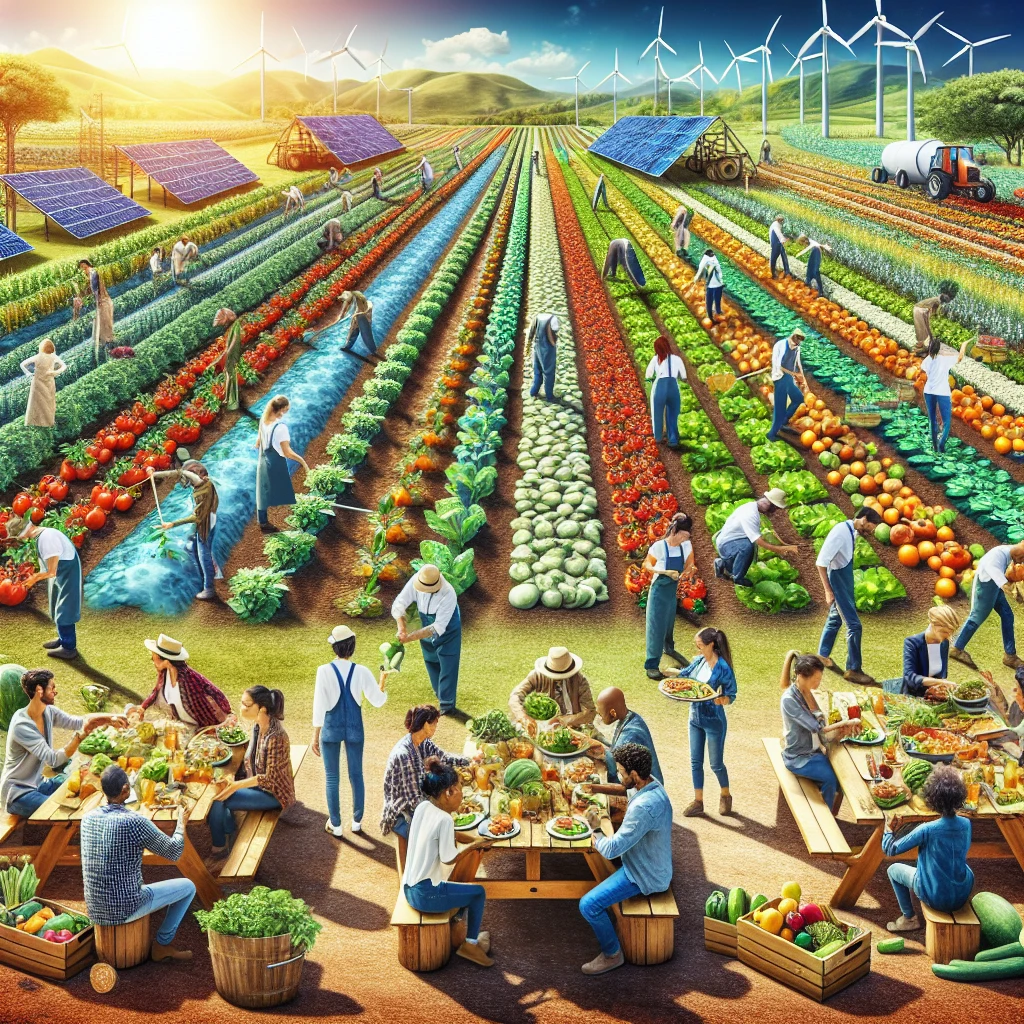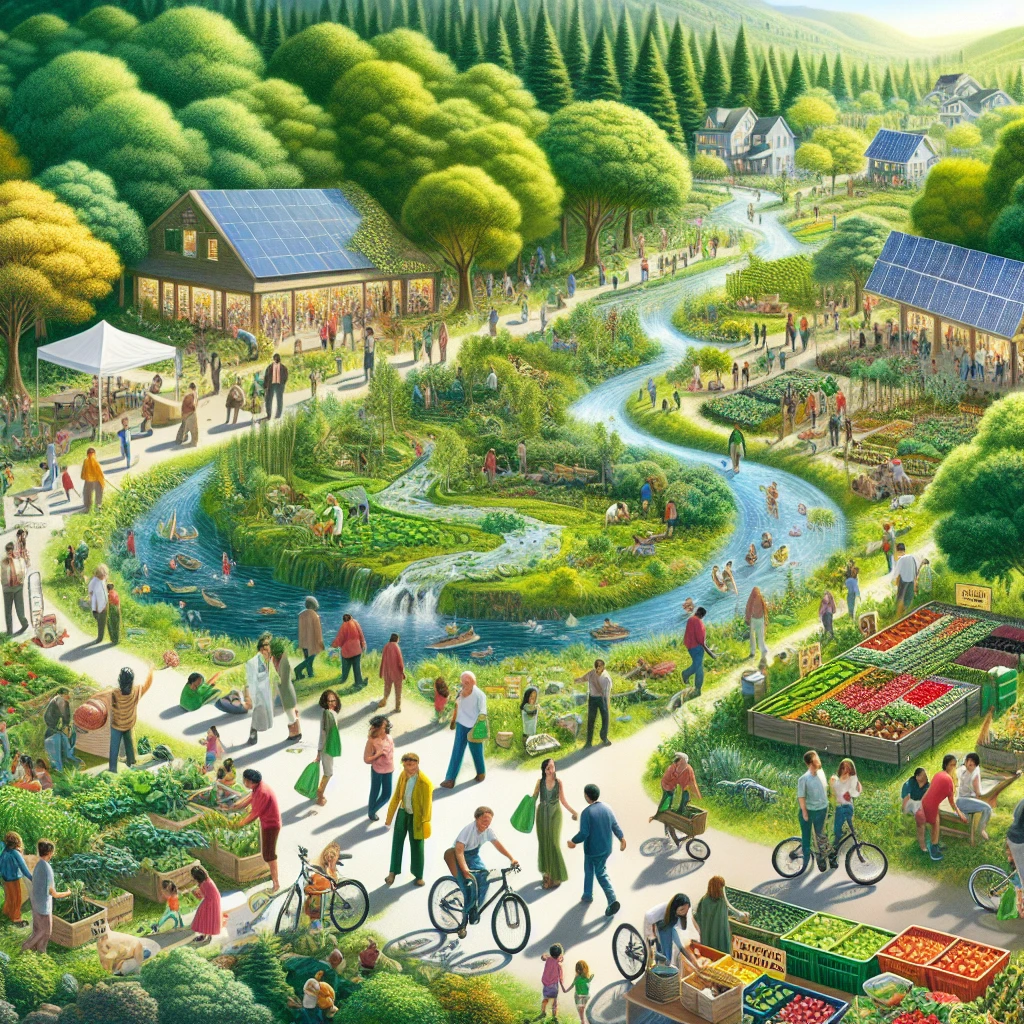

Environmental problems refer to issues such as pollution, climate change, deforestation, and loss of biodiversity that negatively impact the planet. It is important to reduce environmental problems in order to protect ecosystems, preserve natural resources, and ensure the well-being of future generations.
Taking steps to address these issues is crucial for the sustainability of the environment and the health of all living beings.
Check out this Youtube video: “10 Ways to Take Care of the Environment” and learn practical tips to reduce environmental problems in your everyday life.
Sustainable Transportation
Use of public transportation
Public transportation plays a crucial role in reducing environmental problems by decreasing traffic congestion and carbon emissions. In the United States, the usage of public transit leads to substantial economic, social, and environmental benefits.
For instance, it contributes over $500 billion to the national economy and supports millions of jobs. Embracing public transportation not only helps alleviate environmental issues but also fosters inclusive and equitable mobility opportunities for all travelers.
Carpooling and ridesharing
Carpooling and ridesharing offer significant environmental advantages, such as a potential reduction of up to 20% in CO2 emissions compared to individual car usage. Moreover, carpooling and ridesharing provide substantial cost savings for participants, enabling them to save on fuel, tolls, and parking fees.
By reducing the number of vehicles on the road, these sustainable transportation options effectively minimize traffic congestion and decrease the emission of harmful pollutants, promoting environmental sustainability.
Energy Conservation
Switching to energy-efficient appliances
Switching to energy-efficient appliances is a great way to reduce environmental problems. By using appliances with Energy Star ratings, you can significantly decrease energy consumption, lower greenhouse gas emissions, and save money on your utility bills.
For example, Energy Star-rated refrigerators and washing machines can result in substantial cost savings and reduce water usage.
Unplugging electronics when not in use
Unplugging electronics when not in use is another effective way to conserve energy and reduce environmental impact. Many household devices and appliances continue to draw power even when turned off, contributing to unnecessary energy consumption.
By unplugging these devices, you can prevent wasted energy and reduce your overall electricity usage, leading to lower energy costs and a decreased environmental footprint.
Waste Reduction
Reduce, Reuse, Recycle
When it comes to waste reduction, the mantra of ‘reduce, reuse, recycle’ holds immense power. By actively reducing the amount of waste we generate, reusing products or materials wherever possible, and recycling items that can’t be reused, we can significantly minimize our environmental impact.
For instance, opting for durable, reusable products over single-use items not only reduces waste but also saves money in the long run. By recycling items such as paper, plastic, and glass, we contribute to conserving natural resources and reducing the energy required for production.
Composting Organic Waste
Composting organic waste is another impactful method for waste reduction. It facilitates the natural decomposition of organic materials, such as food scraps and yard trimmings, into nutrient-rich compost that can be used to enrich soil and support plant growth.
This not only diverts organic waste from landfills, where it would emit harmful greenhouse gases, but also minimizes the need for chemical fertilizers and promotes sustainable agricultural practices. Embracing composting in households and communities embodies a simple yet potent approach to reducing environmental problems.
Water Conservation
Fixing leaks
Fixing leaks in faucets can save a significant amount of water. A very typical leak of 10 drips per minute wastes nearly one gallon per day, adding up to 29 gallons per month.
This contributes to both water and financial waste, making it essential to address leaks promptly.
Installing low-flow fixtures
Installing low-flow fixtures is a crucial step in water conservation. These fixtures are specifically designed to limit water waste.
On average, they expel around half the gallons per minute compared to standard fixtures, saving approximately a thousand gallons of water per year. In addition to personal water conservation, it also facilitates the thriving of flora and fauna in areas prone to water scarcity.
Sustainable Food Choices
Eating plant-based meals
Eating plant-based meals significantly contributes to reducing environmental problems. Plant-based diets have a lower carbon footprint compared to animal-based diets, leading to reduced greenhouse gas emissions.
Moreover, plant-based diets require less water and land use, consequently conserving natural resources and improving water quality. For example, opting for meals centered around fruits, vegetables, nuts, and legumes can have a significant positive impact on both individual health and the environment.
Buying locally-sourced and organic products
Buying locally-sourced and organic products is another effective way to reduce environmental problems. Locally-sourced food reduces the carbon footprint associated with transportation and supports local farmers.
It also promotes sustainability by minimizing the use of packaging and reducing food waste. Additionally, organic farming practices contribute to air and water quality improvement by avoiding harmful pesticides and chemicals.
For example, purchasing produce from farmers’ markets or joining a community-supported agriculture (CSA) program can help in supporting sustainable food production practices.
| Aspect | Benefits |
|---|---|
| Reduced Emissions | Lower carbon footprint |
| Conservation of Resources | Less water and land use |
| Supporting Local Economy | Backing local farmers |
| Sustainable Practices | Minimized packaging and food waste |
Make sure the content is accurate, complete and relevant to the topic.
Green Home Improvements
Installing solar panels
Installing solar panels is a fantastic way to reduce environmental problems and save money on energy bills. By harnessing the power of the sun, solar panels can significantly reduce or even eliminate your reliance on traditional energy sources.
Additionally, installing solar panels can earn you tax credits and rebates, providing a financial incentive to make the switch to renewable energy. Solar panels can also increase the value of your home, making it a smart investment for the future.
With the increasing affordability of solar panels, it’s a financially savvy and environmentally responsible choice for homeowners.
Supporting Renewable Energy
Renewable energy providers play a crucial role in reducing environmental problems. By choosing renewable energy providers, such as NextEra Energy and Iberdrola SA, individuals and businesses can actively support the transition to cleaner energy sources.
These companies are leading the way in renewable energy production, with a focus on wind and solar power generation. Their commitment to sustainability and innovation sets the standard for the industry, making them top choices for environmentally conscious consumers.
Advocating for renewable energy policies is equally important in addressing environmental challenges. State and local governments are leading the way in implementing policies that support the expansion of renewable energy.
By advocating for supportive policies, individuals can contribute to the acceleration of renewable energy adoption on a broader scale. Initiatives like the American Clean Power Association’s efforts to transform the U. S. power grid and expand demand for renewable energy technologies are pivotal in driving meaningful change and mitigating environmental impact.
| Renewable Energy Providers | Key Focus |
|---|---|
| NextEra Energy | Wind and solar power generation |
| Iberdrola SA | Multinational electric utility with a focus on renewables |
Environmental Education and Advocacy
Spreading awareness about environmental issues
Spreading awareness about environmental issues is crucial in mobilizing people to take action and make a positive impact. By utilizing social media platforms, blogs, and websites, individuals can share information and engage the public, thereby raising awareness about pressing environmental concerns.
Attending rallies or marches is also an effective way to draw attention and demonstrate solidarity in advocating for environmental preservation. Furthermore, collaborating with like-minded individuals and organizations can amplify efforts in raising awareness and inspiring collective action.
Participating in environmental advocacy campaigns
Participating in environmental advocacy campaigns offers tangible ways to contribute to the movement. Encouraging friends, family, and co-workers to reduce carbon pollution and join global movements like Count Us In can inspire practical steps towards combating climate change.
Getting involved in local projects, promoting environmental awareness, and engaging with elected officials can lead to meaningful change at the grassroots level. Moreover, by collaborating with environmental organizations and supporting initiatives that align with sustainability goals, individuals can play a significant role in advocating for a healthier planet.
| Benefits of Environmental Advocacy Campaigns |
|---|
| 1. Inspires practical steps to combat climate change |
| 2. Leads to meaningful change at the grassroots level |
| 3. Contributes to a healthier and sustainable planet |
Sustainable Lifestyle Choices
Using eco-friendly products
When it comes to sustainable lifestyle choices, using eco-friendly products can have a significant impact on reducing environmental problems. By opting for products made from sustainable materials, such as bamboo toothbrushes, reusable shopping bags, and biodegradable cleaning supplies, individuals can minimize their carbon footprint and contribute to a healthier planet.
Additionally, choosing energy-efficient appliances and eco-friendly packaging further enhances the positive impact on the environment.
Reducing meat and dairy consumption
Another vital aspect of sustainable lifestyle choices is reducing meat and dairy consumption. Embracing a plant-based diet not only promotes better health but also significantly reduces greenhouse gas emissions.
Incorporating more plant-based protein sources, such as legumes, tofu, and tempeh, into one’s diet can aid in mitigating environmental stressors, preserving natural resources, and curbing climate change.
| Sustainable Lifestyle Choices |
|---|
| Using Eco-Friendly Products |
| Reducing Meat and Dairy Consumption |
Eco-Friendly Gardening
Planting native species
Planting native species is crucial for maintaining biodiversity and preserving the natural ecosystem. By choosing native plants, you create a habitat that supports local wildlife and provides food and shelter for various species.
For example, planting milkweed can help conserve the declining population of monarch butterflies. Native plants also require less maintenance, as they are naturally adapted to the local climate and soil conditions.
Using natural pest control methods
Implementing natural pest control methods is not only environmentally friendly but also promotes a healthy garden ecosystem. For instance, attracting beneficial insects like ladybugs and praying mantises can help naturally control pest populations.
Additionally, using neem oil, insecticidal soaps, and diatomaceous earth can effectively manage pests without harming beneficial insects or the environment.
Recommended Amazon Products for Reducing Environmental Problems
Here’s a curated list of products that can help you reduce environmental problems with ease. These recommendations are based on functionality, price, and reviews.
Electric Scooter
An electric scooter is a sustainable transportation option that helps reduce air pollution and traffic congestion in urban areas. It’s cost-effective and environmentally friendly, making it a great alternative to traditional gasoline-powered vehicles. The Electric Scooter is highly rated for its performance and eco-friendly features.


| Pros | Cons |
|---|---|
| Emission-free transportation | Limited range compared to cars |
| Low operational cost | Initial investment can be high |
| Easy to maneuver in traffic | Safety concerns in crowded areas |
LED Light Bulbs
LED light bulbs are energy-efficient and have a longer lifespan compared to traditional incandescent bulbs. By switching to LED bulbs, you can significantly reduce energy consumption and lower your electricity bills. The LED Light Bulbs on the market offer a wide range of options for different lighting needs.


| Pros | Cons |
|---|---|
| Energy-efficient | Higher upfront cost compared to incandescent bulbs |
| Long lifespan | Limited dimming capabilities |
| Environmentally friendly | Disposal considerations for older bulbs |
Compost Bin
A compost bin is an effective way to reduce waste by recycling organic materials into nutrient-rich soil. It’s a sustainable practice that can divert food scraps from landfills and reduce greenhouse gas emissions. The Compost Bin options available offer easy-to-use designs for indoor or outdoor composting.


| Pros | Cons |
|---|---|
| Reduces organic waste | Requires proper maintenance and turning of compost |
| Creates natural fertilizer | Potential for odor and pest issues |
| Environmentally friendly | Takes time for compost to mature |
Rain Barrel
A rain barrel is a simple solution for water conservation by collecting and storing rainwater for various household uses. It reduces the demand on the local water supply and provides free water for gardening and other non-potable uses. The Rain Barrel options available come in different capacities and designs to fit any home’s needs.


| Pros | Cons |
|---|---|
| Water conservation | Initial cost of installation |
| Free water supply | Maintenance to prevent mosquito breeding |
| Eco-friendly | Limited use during dry seasons |
Solar-Powered Outdoor Lights
Solar-powered outdoor lights are an eco-friendly lighting solution that harnesses the power of the sun to illuminate outdoor spaces. They eliminate the need for electricity and reduce carbon emissions associated with traditional lighting. The Solar-Powered Outdoor Lights available come in various designs and styles to enhance your outdoor environment.


| Pros | Cons |
|---|---|
| Energy-efficient | Initial cost and location for optimal sun exposure |
| Low maintenance | Limited illumination during consecutive cloudy days |
| Environmentally friendly | Battery replacement over time |
Top Recommended Product for Reducing Environmental Problems
If you’re looking for the best solution for reducing environmental problems, we highly recommend the Electric Scooter. Here’s why:


The electric scooter provides emission-free transportation, a low operational cost, and easy maneuverability in traffic, making it an ideal sustainable transportation option. Ready to reduce environmental problems? Check out the Electric Scooter today for the best results!


Conclusion
There are many ways individuals can reduce environmental problems. By conserving energy and water, recycling, and using public transportation, people can decrease their impact on the environment.
Additionally, choosing sustainable products, reducing waste, and planting trees can also contribute to environmental conservation efforts. Moreover, supporting legislation and policies that promote environmental protection, as well as educating others about the importance of preserving the environment, are essential steps in addressing environmental issues.
Finally, adopting eco-friendly practices in daily life, participating in clean-up efforts, and advocating for sustainable practices in communities can further contribute to the collective effort to reduce environmental problems. It is important for everyone to take responsibility and make changes to protect the environment for future generations.












